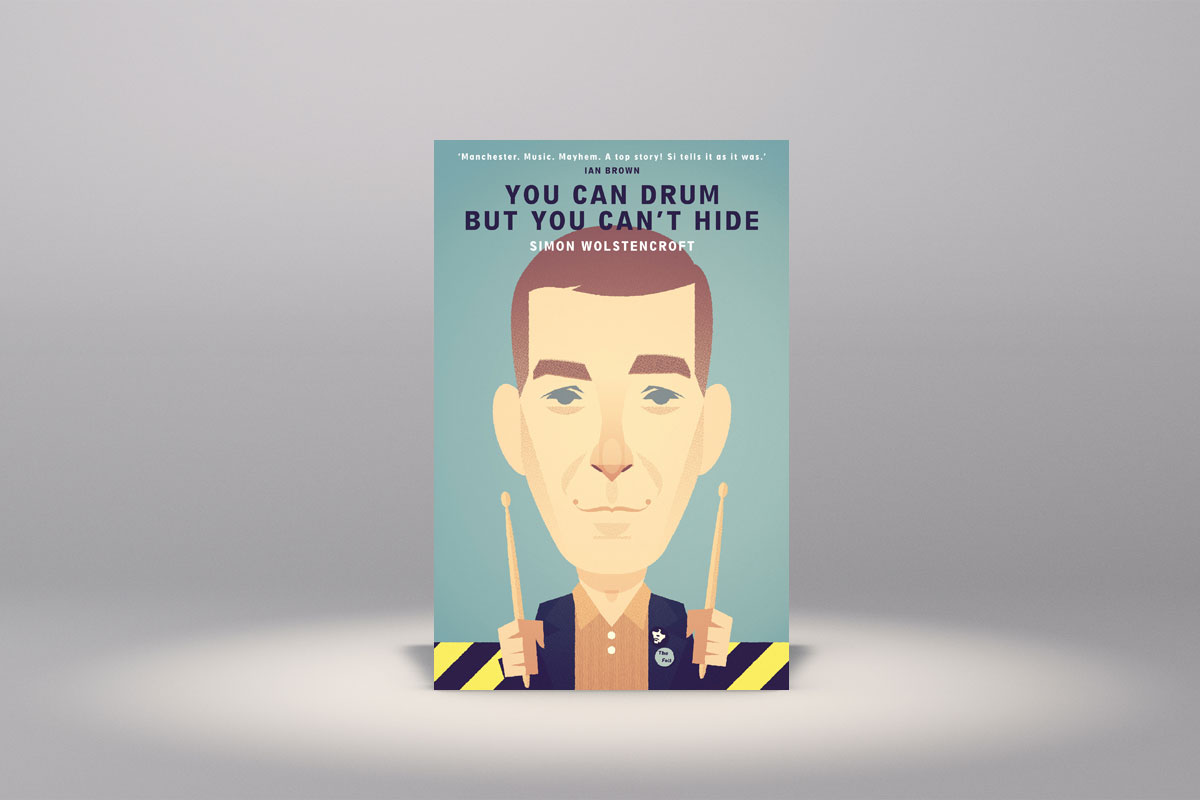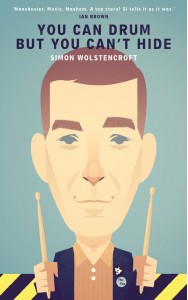An extract from Simon Wolstencroft's memoir You Can Drum But You Can't Hide. Si had been playing in a band with Johnny Marr and Andy Rourke called Freak Party, which came to an end when Johnny got arrested in connection with a stolen Lowry painting.
Johnny Marr had fallen off my radar for a few months. With the drugs scene at Andy’s house and the arrest, he was still keeping away from any trouble. Then one night in 1982, out of the blue, he phoned me at my parents’ house. He had been hard at work in the months since I’d seen him.
Firstly, making contact with Steven Patrick Morrissey, one time singer in punk band Ed Banger and the Nosebleeds and a regular letter writer in the weekly music press. I’d never heard of Steven, but Johnny was really enthusiastic about him. I had heard of the Nosebleeds before but I was not a fan, I was more familiar with Slaughter & the Dogs – another Wythenshawe punk band.
Secondly, he had been co-writing a few tunes.
‘Si, will you be the drummer in my new band?’ Johnny asked me. I was standing in my parents’ bedroom, on the upstairs phone. My first thought was: my band? What’s that about?
‘We’re called The Smiths.’
The Smiths?
What a crap name.
Johnny went on to explain how urgently he needed to get in the studio for real to record a number of newly crafted songs that the two of them had been working on. He seemed determined to make this band work at all costs.
I wondered if this was yet another new band with unrealistic hopes of making it to the big time?
It was late at night sometime around the start of summer 1982 when Johnny rang and told me that Morrissey and he were hiring the studio at Decibelle to record a demo tape of the new band. I had visions of my new wheels being nicked in the dead of night. The previous year, my car had disappeared from Jersey Street and Johnny and I had to walk all the way home in the snow, after a brief stopover in a freezing flat in Chorlton.
This band was quite different from what we’d been doing in Freak Party, Johnny said. It wasn’t a funk band, which was a bit disappointing for me as that was what I liked. So I wasn’t too keen at all, but, due to Johnny’s persistence, agreed to do the recording one night the following week, after filleting fish all day.
I gave Johnny a lift over to Morrissey’s mum’s house on Kings Road in Stretford so they could exchange cassette tapes of tracks they were working on. Morrissey seemed a lot older than me and Johnny, and he didn’t seem to have much charisma either, but I guess I had just met the guy and he’d yet to convince the world of his abilities. Plus, he says himself that he’s very shy. We nodded at each other in the hallway of the semi in Stretford. The songwriters briefly discussed the plan of action for the week ahead before Johnny and I went back into the night and back to Altrincham.
The next week, after driving home from work and doing my best to scrub away the smell of fish from my hands, I loaded my new Tama Swingstar kit into the motor and went to pick up Johnny from his lodgings in Bowdon. An hour later Johnny was running through the songs: ‘Suffer Little Children’, which had obvious references to the tragic case of the Moors Murders in 1963, and ‘The Hand That Rocks the Cradle’, which was less depressing in the circumstances, I suppose. Dale Hibbert was playing bass. The three of us went through the songs and waited for the arrival of Morrissey.
By the end of the first run through, I realised that Dale wasn’t as good as Andy on bass and wished he was with us. There was a knock on the door and Morrissey was let in. He had a long dog-eared tweed coat, winkle-picker shoes and a carrier bag full of lyrics. After greeting his new songwriting partner, he gave the briefest of a shy smile in my direction, where I waited behind the kit for him to begin singing. When Dale had a sound level in Morrissey’s cans from the control room, he came back into the live room and we were ready to begin.
As soon as he came in on the first verse going ‘Over the moor. Take me to the moor’ it grated with me and it all went downhill from that point onwards, in more ways than one.
The sound was a million light years away from what was turning me on musically at the time. I missed the super-funk basslines from Andy and Johnny’s Chic-style guitar moves. I didn’t get it, whatsoever. I was just thinking, this is depressing.
Morrissey looked like a member of the dirty raincoat brigade, as one NME hack had loosely pigeonholed this type of music. I didn’t like the cut of his jib.
The next day, I told Johnny the gig wasn’t for me.
So that was that anyway.
You can say what you want about The Smiths and Morrissey’s singular streak of genius and what a fool I must have been, and anything like that, but here’s the thing: I didn’t like Morrissey’s voice. Straightaway, I didn’t like it.*
I didn’t really think about Johnny’s band for a couple of months and went back to smoking at Hawthorn Lane until, unexpectedly, Johnny asked Andy to replace Dale on bass. It was a bit of a shock to me as I was hoping to be in a new band with Andy as my musical muse. Morrissey and Marr had auditioned two or three drummers and had settled on Mike Joyce, known for his work with punk band, Victim. Now they wanted my mate Andy Rourke too. Johnny and Andy had grown up together whilst at St Augustine’s, so I shouldn’t have been too surprised at this turn of events.
I was, then, consigned to a footnote in that little story.
My part in what would become a historic night in Ancoats was brought back to me in full, years later, when a bloke from Scotland appeared on BBC TV show Mastermind with The Smiths as his specialist subject. He was asked by presenter John Humphrys, ‘Who played drums on the first Smiths recordings?’
‘Simon Wolstencroft,’ he replied.
Thank God he got it right. Not entirely forgotten.

